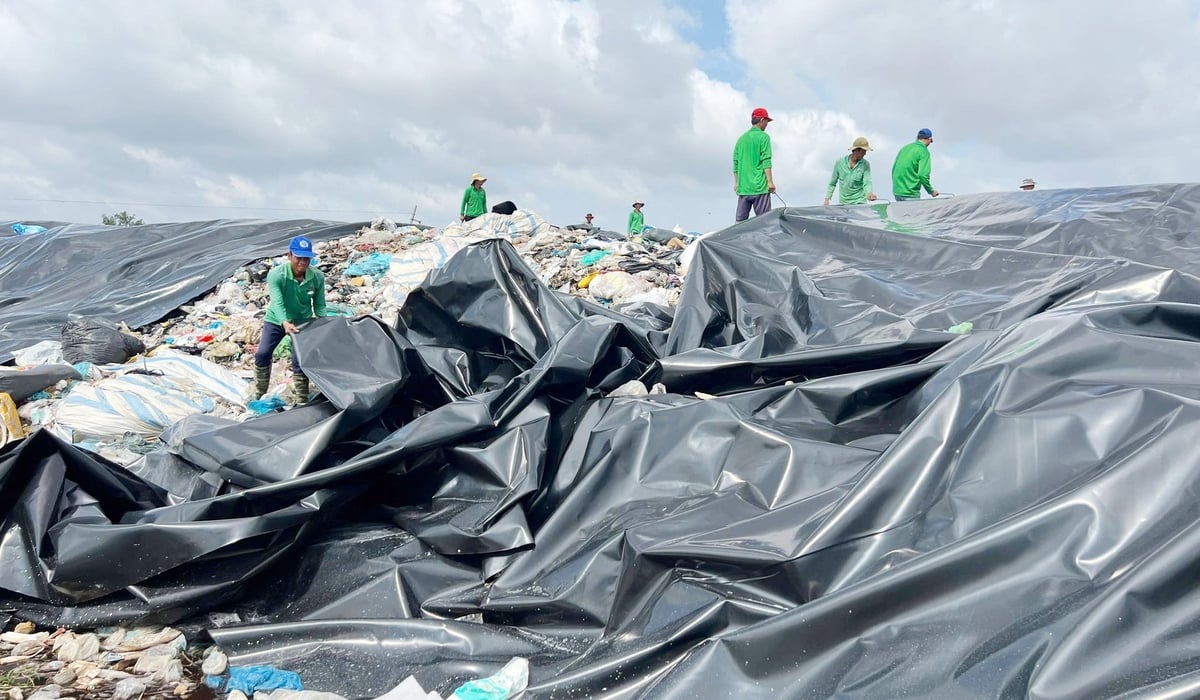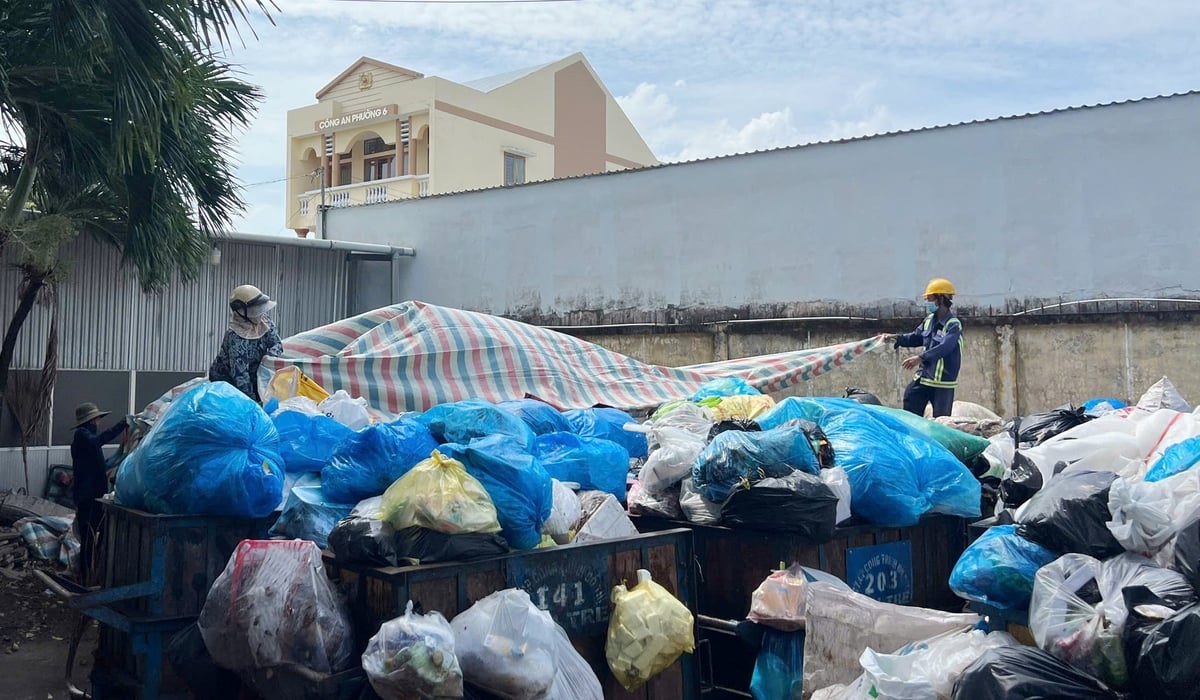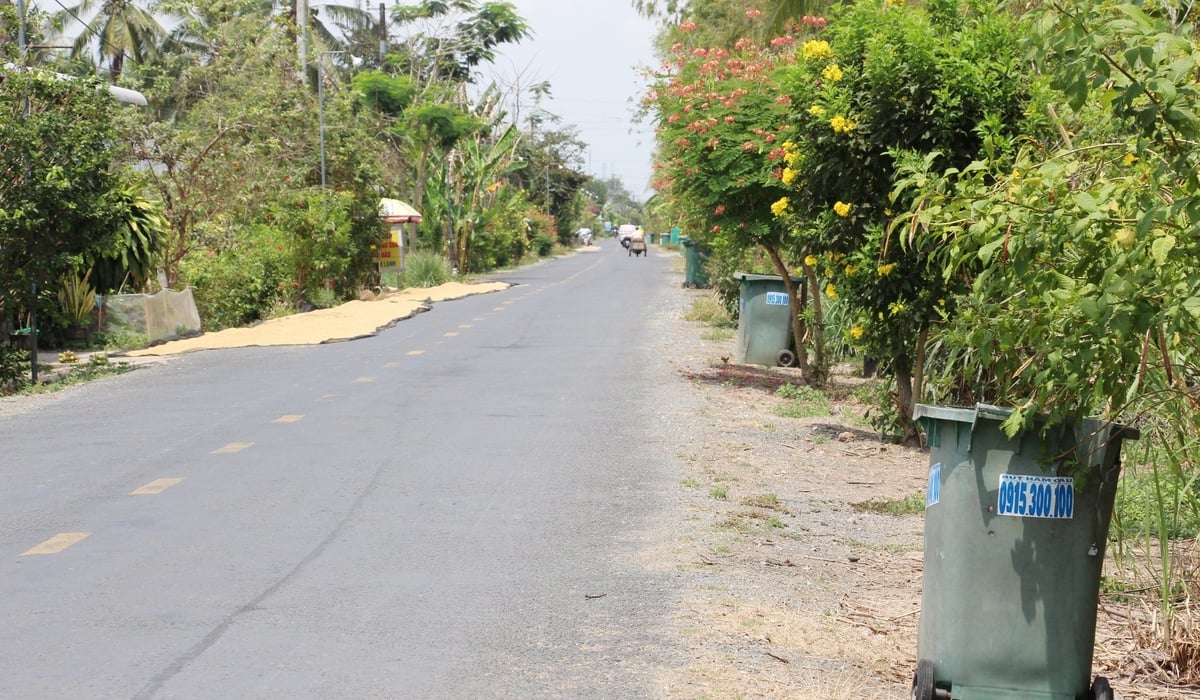November 24, 2025 | 04:01 GMT +7
November 24, 2025 | 04:01 GMT +7
Hotline: 0913.378.918
November 24, 2025 | 04:01 GMT +7
Hotline: 0913.378.918
Following the administrative boundary merger, Vinh Long Province now generates an estimated 2,257 tons of municipal solid waste per day. Of this, about 1,290 tons are collected and treated at centralized facilities. The remaining waste, mostly in rural areas, is handled by households themselves, through self-collection, treatment, recycling, or reuse for various purposes.

Most landfill sites in Vinh Long Province are currently overloaded. Photo: Le Hung.
In Vinh Long Province, household waste is currently treated through several methods beyond traditional landfilling. These include incineration, incineration combined with composting of organic waste, and sorting recyclable components for transfer to specialized units for recycling and reuse.
However, according to the Vinh Long Department of Agriculture and Environment, while landfilling remains a technically simple and economically viable solution, its long-term application has revealed multiple environmental shortcomings. Specifically, many landfill sites have yet to meet proper odor control standards, often lacking necessary deodorizing chemicals and odor treatment systems. Additionally, leachate from these sites continues to pose a threat to soil and water quality in nearby areas.
Another growing concern is the rapid urban expansion surrounding older landfill sites. Areas that were once planned at a safe distance from residential zones are now being encroached upon as population centers and housing developments grow closer to waste disposal sites. At the same time, several landfills are approaching their maximum capacity, creating heightened risks of environmental pollution and negative impacts on the health and quality of life of nearby communities.

Vinh Long Province is strictly monitoring the collection and transportation of waste at transfer stations and temporary gathering points to ensure environmental hygiene. Photo: Le Hung.
Amid growing waste volumes, increasingly overloaded landfills, outdated treatment technologies at some facilities, and stricter regulations under the 2020 Law on Environmental Protection that limit direct landfilling, Vinh Long Province is prioritizing solutions to reduce landfill dependence and promote modern, environmentally friendly waste treatment technologies.
According to Mr. Lam Van Tan, Director of the Vinh Long Department of Agriculture and Environment, adopting advanced and eco-friendly waste treatment technologies is an essential direction. Currently, two waste-to-energy incineration plants are being developed in the province, with treatment capacities ranging from 350 to 650 tons per day and night, and are expected to be fully operational by 2027. At the same time, the province is actively seeking investment for a third waste-to-energy plant at the Hoa Phu landfill, with a projected capacity of about 500 tons per day.
“When these waste treatment plants officially come into operation, the total municipal solid waste treatment capacity is expected to reach between 1,700 and 1,850 tons per day and night,” Mr. Tan added. “This will significantly reduce the volume of waste sent to landfills and create favorable conditions for Vinh Long Province to pursue its goals of sustainable economic development and environmental protection.”
Alongside investment in modern waste treatment plants, Vinh Long is also focusing on implementing household waste separation at source. Currently, the Department of Agriculture and Environment is reviewing existing regulations on municipal solid waste management issued by localities prior to the administrative merger. The goal is to propose a unified regulation to the provincial People’s Committee for consistent application across the entire province.

According to the plan, Vinh Long Province will install additional public trash bins, creating favorable conditions for residents to store waste while waiting for authorized units to collect and process it. Photo: Le Hung.
At the same time, the Department of Agriculture and Environment is working closely with relevant agencies, units, and local authorities to strengthen public communication and advocacy, aiming to change household behaviors and awareness regarding waste collection and sorting. The focus is on reducing the use of non-biodegradable products, encouraging recycling and reuse, and ultimately minimizing the volume of waste sent to landfills.
The province is also tightening oversight of waste collection and transportation activities carried out by public service units, ensuring proper hygiene at transfer stations and temporary waste collection points. Additional trash bins are being installed along major roads and in public areas to make it easier for residents to store waste while awaiting collection.
These efforts represent important steps that Vinh Long Province is taking to improve the effectiveness of waste collection, sorting, and treatment. They are aligned with the province’s broader goals of socio-economic development and environmental protection, contributing to a greener, cleaner, and more sustainable Vinh Long in the years ahead.
Translated by Phuong Linh

(VAN) The information was shared at the seminar 'Urban Agriculture - Solutions for Developing Green Spaces,' organized by the Kinh te & Do thi Newspaper and the Biotechnology Center of Ho Chi Minh City.
/2025/11/19/4141-2-132831_216.jpg)
(VAN) One of Japfa's outstanding solutions is implementing digital transformation and artificial intelligence (AI) to optimize operations, enhance productivity, and advance sustainable development.
/2025/11/19/4847-1-093540_448.jpg)
(VAN) The Gia Lai Provincial People’s Committee had a working session with the delegation of the U.S. Department of Agriculture, the State of Idaho, and representatives of the State's leading enterprises.

(VAN) Ca Mau has a sufficient foundation to become a strong regional aquaculture center, where production integrates the economy, the environment, and the lives of the people.

(VAN) SEIKI Group envisions itself as a pioneer in the ‘dual transformation’ of digital technology and green industry, standing alongside the Government and Vietnamese businesses in their pursuit of sustainable development.

(VAN) The VNGEONET network affirms Viet Nam's progress in mastering digital space, providing a precise positioning data platform to serve socioeconomic development.
/2025/11/14/3247-1-184556_35.jpg)
(VAN) Thai Nguyen is methodically implementing digital transformation in the livestock sector, laying the foundation for a modern, transparent, and sustainable agriculture.